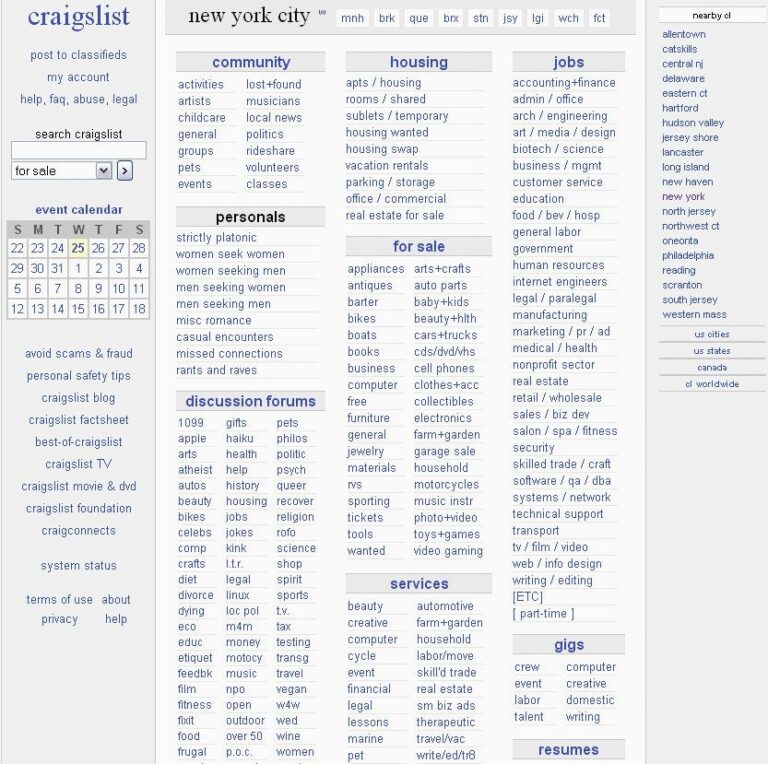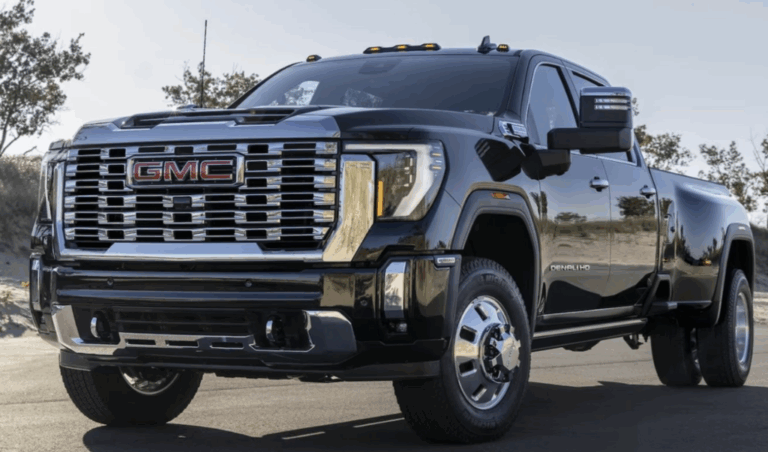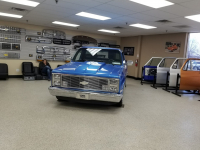New Diesel Semi Trucks For Sale: Powering the Future of Freight
New Diesel Semi Trucks For Sale: Powering the Future of Freight cars.truckstrend.com
The roar of a diesel engine, the glint of chrome, and the sheer scale of a semi-truck traversing the open highway are iconic images of modern commerce. These mighty machines are the backbone of global logistics, tirelessly transporting goods across vast distances and connecting producers with consumers. For independent owner-operators, fleet managers, and logistics companies, the decision to invest in a new diesel semi truck is a pivotal one, representing a significant capital outlay but also a crucial investment in operational efficiency, reliability, and long-term profitability.
This comprehensive guide delves into the world of new diesel semi trucks for sale, offering insights into why they remain a dominant force in the industry, what to consider before purchasing, a practical guide to the buying process, and an overview of market prices and leading manufacturers.
New Diesel Semi Trucks For Sale: Powering the Future of Freight
Why Invest in a New Diesel Semi Truck? The Unbeatable Advantages
While the trucking industry sees growing interest in alternative fuels, new diesel semi trucks continue to dominate the market due to their proven performance, robust infrastructure, and continuous technological advancements. Investing in a brand-new diesel rig offers a multitude of compelling benefits:
- Unparalleled Reliability & Longevity: New trucks come with zero mileage and the latest manufacturing quality. This translates to significantly less downtime due to unexpected breakdowns, ensuring your cargo reaches its destination on time. With proper maintenance, a new diesel semi truck can reliably serve for well over a million miles.
- Advanced Technology & Fuel Efficiency: Modern diesel engines are marvels of engineering. They boast sophisticated electronic controls, improved aerodynamics, and advanced powertrain integrations that deliver impressive fuel efficiency, directly impacting your bottom line. Features like automated manual transmissions (AMTs), predictive cruise control, and low-rolling-resistance tires further enhance fuel savings.
- Emissions Compliance & Environmental Responsibility: Today’s new diesel trucks are designed to meet stringent EPA (Environmental Protection Agency) and CARB (California Air Resources Board) emissions standards. Equipped with Diesel Particulate Filters (DPFs), Selective Catalytic Reduction (SCR) systems, and Diesel Exhaust Fluid (DEF) technology, they are significantly cleaner than their predecessors, reducing harmful emissions and ensuring compliance for years to come.
- Comprehensive Warranty & Manufacturer Support: A new truck comes with a full factory warranty covering major components like the engine, transmission, and axles. This provides peace of mind and protection against unforeseen manufacturing defects. Access to extensive dealer networks and certified technicians ensures prompt and expert service.
- Enhanced Driver Comfort & Safety: Manufacturers are increasingly prioritizing driver well-being. New trucks feature ergonomic cab designs, advanced HVAC systems, premium seating, quiet interiors, and integrated infotainment. Crucially, they also incorporate cutting-edge Advanced Driver-Assistance Systems (ADAS) such as collision mitigation, lane departure warning, adaptive cruise control, and blind-spot monitoring, significantly improving safety for the driver and others on the road.
- Financing Advantages: Lenders often offer more favorable interest rates and terms for new vehicle purchases due to their higher resale value and lower perceived risk. This can lead to lower monthly payments and better overall financial health for your operation.
- Positive Brand Image: Operating a fleet of new, well-maintained trucks projects a professional and reliable image to your clients, potentially attracting more business and strengthening existing relationships.

Key Considerations When Buying a New Diesel Semi Truck
Purchasing a new semi truck is a complex decision that requires careful planning and a thorough understanding of your specific operational needs. Here are critical factors to consider:

- Application & Type of Hauling: Will you be doing long-haul, regional, or vocational work? The type of freight (dry van, reefer, flatbed, tanker, heavy haul) dictates the necessary engine power, axle configuration, gross vehicle weight rating (GVWR), and gross combination weight rating (GCWR).
- Engine & Drivetrain Specifications: Horsepower (HP) and torque ratings are crucial. Higher HP is needed for heavy loads and mountainous terrain, while a good torque curve is vital for pulling power. Consider manual vs. automated manual transmissions (AMT); AMTs are increasingly popular for their fuel efficiency and ease of driving.
- Fuel Efficiency Goals: Research specific models known for their fuel economy. Factors like aerodynamics, engine calibration, tire choice, and idle reduction features can significantly impact your operating costs.
- Safety Features: Prioritize trucks equipped with the latest ADAS technologies. These systems can prevent accidents, reduce insurance costs, and enhance driver safety.
- Driver Comfort & Amenities: A comfortable driver is a productive driver. Evaluate cab space, sleeper configurations (single vs. double bunk, high-roof vs. mid-roof), storage, infotainment systems, and auxiliary power units (APUs) for climate control during rest periods.
- Maintenance & Service Network: Consider the availability of authorized service centers and parts for your chosen brand in your operational routes. A strong dealer network minimizes downtime for maintenance and repairs.
- Resale Value: Certain brands and models consistently hold their value better than others. Research market trends to ensure your investment retains its worth over time.
- Budget & Financing: Determine your budget range and explore various financing options, including traditional loans, leasing, and manufacturer-specific financing programs. Understand the total cost of ownership, including insurance, maintenance, and fuel.

Leading Manufacturers and Popular Models
The North American semi truck market is dominated by a few key players, each offering a range of models designed for various applications.
- Freightliner: A Daimler Trucks brand, Freightliner is the market leader, renowned for its fuel efficiency and innovative technology. The Cascadia is their flagship model, consistently the best-selling Class 8 truck, known for its aerodynamic design, advanced safety features, and driver comfort.
- Kenworth: Part of PACCAR Inc., Kenworth trucks are celebrated for their quality, durability, and strong resale value. The T680 is a popular aerodynamic long-haul truck, while the classic W900 remains a favorite for its traditional styling and rugged performance.
- Peterbilt: Also a PACCAR brand, Peterbilt is known for its iconic styling, premium features, and strong driver appeal. The 579 is their modern, aerodynamic offering, while the 389 (and its predecessor, the 379) is a highly sought-after traditional "hood" truck.
- Volvo Trucks: A global leader, Volvo is synonymous with safety, driver comfort, and fuel efficiency. The VNL series offers various sleeper configurations and is known for its integrated powertrain, advanced safety systems, and comfortable interiors.
- International Trucks: A Navistar International Corporation brand, International offers a wide range of commercial trucks. The LT Series is their flagship long-haul truck, focusing on fuel efficiency, uptime, and driver satisfaction.
- Mack Trucks: Another Volvo Group brand, Mack trucks are renowned for their ruggedness, durability, and classic American styling, particularly in vocational applications. The Anthem is their modern highway model, while the Pinnacle is a versatile performer.
The Purchasing Process: A Step-by-Step Guide
Acquiring a new diesel semi truck is a significant undertaking. Following a structured process can simplify the experience:
- Define Your Needs: Clearly outline your operational requirements – type of freight, routes, desired fuel efficiency, specific safety features, and budget.
- Research & Compare: Dive deep into manufacturers’ websites, brochures, and industry reviews. Compare specifications, features, and reported performance of different models.
- Engage with Dealerships: Visit multiple authorized dealerships. Discuss your needs with sales representatives, ask for detailed specifications sheets, and inquire about available inventory or custom order lead times. If possible, test drive a similar model to gauge driver comfort and handling.
- Explore Financing Options: Consult with your bank, credit union, and the dealership’s finance department. Understand the pros and cons of purchasing outright, traditional loans, TRAC leases, or fair market value leases. Compare interest rates, down payment requirements, and repayment terms.
- Spec Out Your Truck: This is where customization happens. Work closely with the dealer to select the precise engine, transmission, axle ratios, suspension, sleeper size, interior trim, and any additional features (e.g., APU, inverter, custom paint) that meet your operational and driver needs.
- Negotiation: Once you have a final specification and quote, negotiate the price, warranty terms, and any included service packages. Don’t be afraid to walk away if the deal isn’t right.
- Finalize Paperwork & Delivery: Carefully review all purchase agreements, financing documents, and warranty details. Arrange for registration, titling, and insurance. Before taking delivery, conduct a thorough pre-delivery inspection to ensure all specified features are present and the truck is in perfect condition.
Understanding the Costs: Price Ranges and Factors
The price of a new diesel semi truck varies significantly based on manufacturer, model, engine size, transmission type, sleeper configuration, advanced technology packages, and customization options. A "base model" for a day cab will be substantially less expensive than a fully-loaded, long-haul sleeper with all the bells and whistles.
Factors influencing price include:
- Engine Horsepower & Torque: More powerful engines command higher prices.
- Transmission Type: Automated manual transmissions (AMTs) are often a premium over manual.
- Sleeper Size & Amenities: Larger, more luxurious sleepers with features like refrigerators, microwaves, and entertainment systems increase cost.
- Advanced Safety Systems (ADAS): Collision mitigation, lane keeping assist, adaptive cruise control packages add to the price.
- Aerodynamic Packages: Fairings, skirts, and other aero enhancements for fuel efficiency.
- Premium Interior Finishes: Leather seats, chrome accents, upgraded dashboards.
- Specialty Equipment: APUs, wet kits, lift axles, custom paint jobs.
Estimated New Diesel Semi Truck Prices (2024)
Prices are highly variable and subject to market conditions, dealer incentives, and chosen specifications. These are general estimated base to moderately spec’d ranges in USD.
| Manufacturer | Popular Model | Typical Application | Engine HP Range | Base Price Range (USD) | Key Features (Common) |
|---|---|---|---|---|---|
| Freightliner | Cascadia | Long-Haul, Regional | 400-600 | $150,000 – $210,000+ | Aerodynamic design, Detroit DD engines, Detroit Assurance ADAS, comfortable spacious interior, fuel efficiency focus. |
| Kenworth | T680 | Long-Haul, Regional | 400-605 | $160,000 – $220,000+ | Driver comfort, PACCAR MX engines, excellent resale value, aerodynamic styling, customizable options. |
| Peterbilt | 579 | Long-Haul, Regional | 400-605 | $160,000 – $220,000+ | Iconic styling, PACCAR MX engines, premium interior, advanced technology, strong brand loyalty. |
| Volvo Trucks | VNL Series | Long-Haul, Regional | 405-600 | $155,000 – $215,000+ | Industry-leading safety features, integrated Volvo powertrain, comfortable and quiet cab, I-Shift AMT. |
| International | LT Series | Long-Haul, Regional | 370-500 | $145,000 – $205,000+ | Fuel efficiency, A26 engine, uptime focus, Bendix Wingman Fusion ADAS, diverse configurations. |
| Mack Trucks | Anthem / Pinnacle | Long-Haul, Vocational | 425-505 | $150,000 – $210,000+ | Rugged durability, MP series engines, comfortable ride, distinctive styling, ideal for tough applications. |
Note: These prices are estimates and can vary greatly based on specific configurations, optional features, market conditions, and dealer promotions. Always obtain a detailed quote from an authorized dealer.
Challenges and Solutions in Acquiring New Diesel Semi Trucks
Even with the advantages, potential challenges exist when purchasing a new semi truck:
- High Upfront Cost:
- Solution: Explore diverse financing options. Leasing can reduce initial capital outlay. Look into government incentives for adopting cleaner technologies or small business loans.
- Supply Chain Delays: The post-pandemic era has seen fluctuating production schedules.
- Solution: Order well in advance of your required date. Be flexible with specifications if in-stock units are available. Work with dealers who have robust inventory management.
- Rapid Technological Change: New features emerge constantly, raising concerns about obsolescence.
- Solution: Focus on core, proven technologies that enhance safety and efficiency. Choose brands with a reputation for reliable software updates and adaptable platforms.
- Finding Qualified Drivers: A new truck is only as good as the driver behind the wheel.
- Solution: Invest in trucks with premium driver amenities and safety features to attract and retain top talent. A comfortable and safe environment can be a significant draw.
Conclusion: Driving Forward with Confidence
Investing in a new diesel semi truck is a strategic decision that positions your operation for efficiency, reliability, and long-term success. While the upfront cost is substantial, the benefits of modern technology, enhanced safety, superior fuel efficiency, and comprehensive manufacturer support far outweigh the initial expenditure.
By meticulously researching your options, understanding your operational needs, and engaging strategically with dealerships, you can navigate the purchasing process with confidence. A new diesel semi truck isn’t just a vehicle; it’s a powerful asset that will drive your business forward, connecting communities and sustaining the flow of goods that keep our economy moving.
Frequently Asked Questions (FAQ) about New Diesel Semi Trucks For Sale
Q1: How much does a new diesel semi truck cost?
A1: The price of a new diesel semi truck typically ranges from $145,000 to over $220,000, depending on the manufacturer, model, engine size, sleeper configuration, advanced safety features, and other customizations. Highly specialized trucks can cost even more.
Q2: What’s the typical lifespan of a new diesel semi truck?
A2: With proper maintenance and regular servicing, a new diesel semi truck can reliably last for 1,000,000 to 1,500,000 miles or more. Engines are often designed for similar lifespans, while transmissions and axles can also last for hundreds of thousands of miles before major overhauls.
Q3: Is it better to buy or lease a new semi truck?
A3: The choice between buying and leasing depends on your financial situation and operational goals.
- Buying: Offers full ownership, potential for equity, tax deductions for depreciation, and no mileage restrictions. Requires a larger upfront capital investment.
- Leasing: Lower upfront costs, fixed monthly payments, potential tax benefits (lease payments are often deductible), and the ability to upgrade to newer models more frequently. May have mileage limits and no equity build-up. Consult with a financial advisor to determine the best option for your business.
Q4: What are the most fuel-efficient new semi trucks?
A4: Many modern semi trucks offer excellent fuel efficiency, with the Freightliner Cascadia, Kenworth T680, Peterbilt 579, Volvo VNL, and International LT Series being top contenders. Fuel efficiency is heavily influenced by engine tuning, aerodynamic packages, automated manual transmissions (AMTs), tire selection, and driving habits.
Q5: How do emissions regulations affect new truck purchases?
A5: New diesel semi trucks are designed to meet current stringent EPA and CARB emissions standards, utilizing technologies like DPFs, SCR systems, and DEF. Purchasing a new truck ensures compliance with these regulations, avoiding potential fines and allowing operation in all states, including California. Older trucks may face restrictions or require costly retrofits.
Q6: What’s the lead time for ordering a new semi truck?
A6: Lead times for new semi trucks can vary significantly based on manufacturer, model popularity, specific component availability, and overall market demand. Historically, lead times could range from a few weeks to several months. In periods of high demand or supply chain disruptions, they can extend to a year or more. It’s best to consult directly with dealerships for current lead time estimates.





